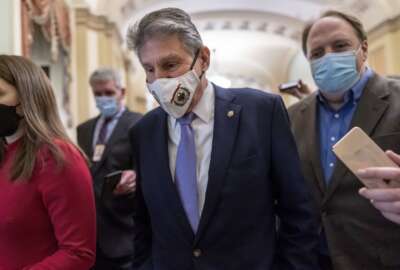Who ‘owns’ a services contractor’s workforce anyway?
A rule ostensibly about fairness may not be so fair on close examination.
Contractors who knock out incumbents for follow-on deals often hire people from the incumbents. Such people know the agency and the work, the reasoning goes. And if they’re willing, they’re easily available. The loser often doesn’t need them anymore. The common refrain goes, “I’ll be back Monday with a new badge.”
Like nearly every other employee-employer transaction in the American system of business, the exchanges occur among private parties. It’s not the government’s concern. If the new contractor said ‘we’re only going to take people under 35,’ or ‘we feel only men can do this job,’ why then they’d justifiably have a federal case on their hands. Otherwise, with a switch in companies, some people will have to find other work.
Now a Biden administration executive order would require winning bidders to hire the old incumbent’s employees connected with the contract or project. The EO should look familiar. It’s nearly identical to an EO the Obama administration instituted in 2009, which the Trump administration nullified in 2019. This time the EO refreshes the idea with detailed clause language contracting officers are obligated to use.
Winning bidders have a slight out, though. They’re not obligated to give right of first refusal to people whose job performance means they were about to get fired. Anyone’s guess how you figure that out.
I asked Stephanie Kostro, the executive vice president of the Professional Services Council, about this. She said the contractor community wasn’t surprised that the Biden White House would take this approach to protecting workers. But she said the business community wasn’t consulted ahead of time, either. So there’s the question of whether formal rule-making is required before the contract language can actually come into force.
With respect to the Biden EO, I think a more flexible approach is in order if you want to protect “workers.” It cites a 1965 law that has long required companies doing work for the government to pay certain minimal levels of salary and benefits. But the EO makes no distinction between a services contractor that mows the proverbial agency lawn, and the contractor developing a digital services platform on which a vast program depends.
Let’s say Melissa’s Mowing underbids incumbent Larry’s Lawns to win the contract to keep the Farklempt Federal Building looking spiffy. You could argue that the crews doing the mowing and trimming are interchangeable. What if Melissa wound up a contract elsewhere but is savvy enough to have won away the new contract. Should she have to fire her existing employees to make room for Larry’s people on the federal job?
For work higher on the skills hierarchy — at the professional services level, say — the rule makes less sense. Companies bid with their talent. They win because the government source selectors thought the new company had the wherewithal to do a better job, or at least as good a job for less. Or maybe it was unhappy with the performance of the incumbent. Why would an agency switch to a new company, only to have the people it chose not to work with show up again?
A few other questions:
- Who is this really fair to, with the potential to displace one group of employees with another?
- What about the company that spent the effort and money to train and develop a workforce that will now be unavailable to it for other jobs?
- How does the rule promote competition when only the managers of contracts change but not the workforce doing the work?
As I mentioned at the outset, as a practical matter many employees actually do switch companies when a new contract holder comes in. By the same token, key people onto which the government has glommed regularly leave for greener pastures — maybe to help the next incumbent. Maybe the EO imposes too rigid a construct on a highly fluid contractor labor market that is inherently efficient in a way beneficial to the government in the first place.
Copyright © 2025 Federal News Network. All rights reserved. This website is not intended for users located within the European Economic Area.
Tom Temin is host of the Federal Drive and has been providing insight on federal technology and management issues for more than 30 years.
Follow @tteminWFED







